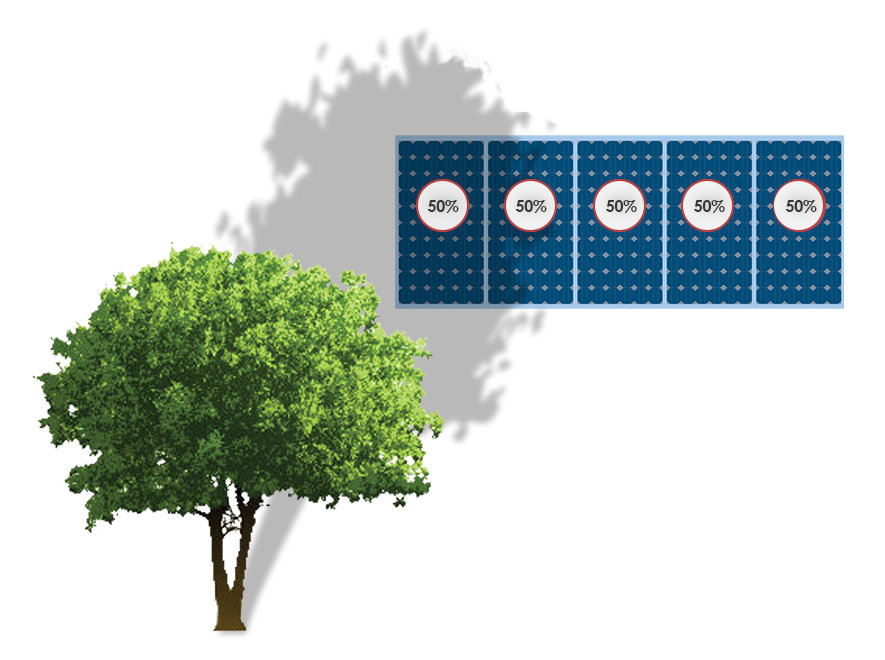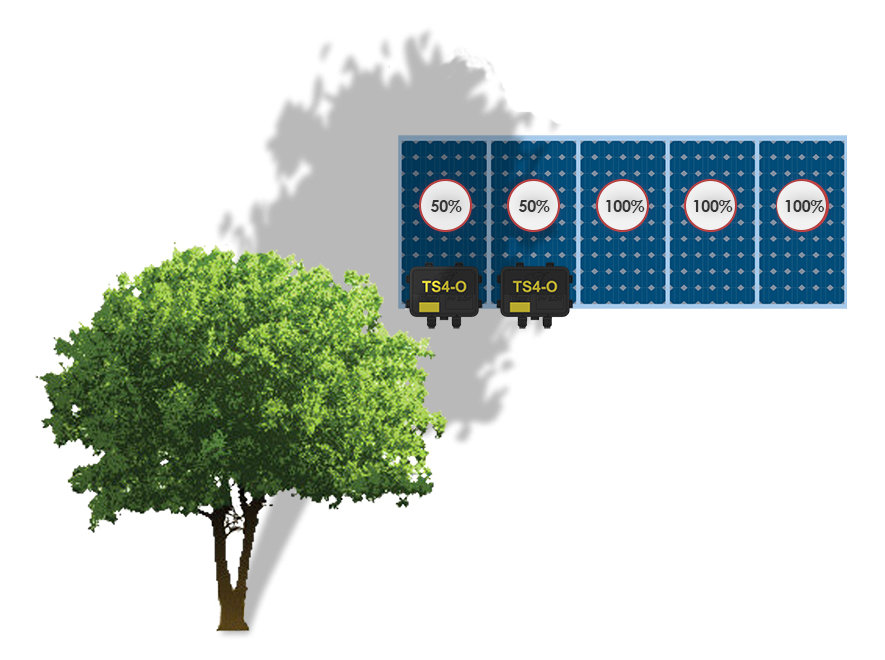CHEAP, EFFECTIVE AND FAST INSTALLATION
TIGO – THE NEW AGE OF OPTIMIZATION OF SOLAR PANELS
WHY DO YOU NEED A SOLAR PANEL OPTIMIZER?
SOLAR PANEL
There are differences in performance between each solar modules, as there are no two completely identical solar cells leaving the production line. To overcome this, the so-called workplace optimizers were created for solar cells. The optimization units maintain a specified current with constant DC voltage, so the inverter works at the highest efficiency possible.
SHADOW EFFECT
AIn the case of traditional solar systems, the solar modules are interconnected. This means that within each string, the modules are not independent of each other because the same current flows through them. If a solar panel system has a shadow effect (e.g. chimney) at a certain part of the day, the entire system’s performance will be reduced; in this case, the lowest power module will determine the flowing current.
WHICH SYSTEM IS THE BEST FOR ME?

TRADITIONAL SYSTEM
In the case of solar systems generating electricity to the traditional network, the solar modules are connected in series, as shown in the figure. In this case, the solar panels are not independent of each other.
The advantage of these systems is that they can be quickly deployed, cheaper and safer than optimized systems.
However, due to serial connection, for example, if a shadow effect occurs on a solar panel, the entire system’s performance is reduced as the performance of the lowest producing solar panel determines the system’s current flow.
For such systems, work-matching electronics belong to a solar cell string so it is not enough for a simpler inverter that only converts DC / AC (DC to AC).
OPTIMIZED SYSTEM
In systems with a solar panel optimizer, power differences and shadow effects between solar panels can be eliminated by a panel operation. It is a popular solution to this problem, as shown in the enclosed figure, when each panel has a DC side with an optimizer that performs a work shift and is independently connected to the inverter.
Performance Optimizer is a DC / DC conversion electronics that is located in a small box directly mounted on the back of the solar panel or attached to the appropriate structure.
Its task is to set the solar panel to the maximum working power point per panel. In this situation, we do not have to fear the power differences between the solar panels and the shadow effect, as the optimizer does not reduce the performance of a full solar system.


TRADITIONAL SYSTEM
In the case of solar systems generating electricity to the traditional network, the solar modules are connected in series, as shown in the figure. In this case, the solar panels are not independent of each other.
The advantage of these systems is that they can be quickly deployed, cheaper and safer than optimized systems.
However, due to serial connection, for example, if a shadow effect occurs on a solar panel, the entire system’s performance is reduced as the performance of the lowest producing solar panel determines the system’s current flow.
For such systems, work-matching electronics belong to a solar cell string so it is not enough for a simpler inverter that only converts DC / AC (DC to AC).

OPTIMIZED SYSTEM
In systems with a solar panel optimizer, power differences and shadow effects between solar panels can be eliminated by a panel operation. It is a popular solution to this problem, as shown in the enclosed figure, when each panel has a DC side with an optimizer that performs a work shift and is independently connected to the inverter.
Performance Optimizer is a DC / DC conversion electronics that is located in a small box directly mounted on the back of the solar panel or attached to the appropriate structure.
Its task is to set the solar panel to the maximum working power point per panel. In this situation, we do not have to fear the power differences between the solar panels and the shadow effect, as the optimizer does not reduce the performance of a full solar system.
Which solar optimizer should I choose?

SOLAREDGE
The disadvantage of the SolarEdge technology is that all the solar panels belonging to the solar system have to be fitted with the optimizer, so it is not sufficient to put it on the panel with the shadow effect.
As a result, not only the cost of a solar system will be more expensive but even one installation job will take a much longer time than another system.
Not to mention that in many cases SolarEdge Optimizer is installed on the solar panel with immediate warranty loss because the panel manufacturers’ warranty terms include not to put other items on the back of the product.

TIGO
Imagine a solar cell optimizer that repairs all of SolarEdge’s errors and is cheap, efficient, and quick to install.
TIGO has found a way to completely rule out the shadow effect so that it does not have to be fitted with an optimizer for each solar panel; you can just put it on the affected panels with shadow effects at intervals (for example, by a chimney).
It’s simple, secure, and just click on the panel so you do not have to worry about the loss of warranty on solar panels!
SolarEdge vs Tigo
| SolarEdge | Tigo | |
|---|---|---|
| Price | High | Low |
| Required number of pieces | For each panel | Only for those concerned |
| Speed of installation | Slow installation | Quick installation |
| Failure option | High | Low |
| Panel Warranty Loss Opportunity | Risky | Risky free |
